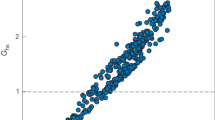Abstract
Laser-induced fusion has been demonstrated by illuminating deuterium—tritium-filled spherical glass shells with a Nd:glass laser [l,2]. These shells were filled with DT fuel mixtures to pressures from 10 to 150 atm,‡ and have had diameters in the range of 40 to 150 μm. The DT fusion reaction occurs as the irradiated shell implodes, compressing the fuel gases which are inertially confined at the high temperatures and densities required to initiate the reaction [3,4]. Theoretical considerations have suggested that the yield of thermonuclear neutrons can be enhanced if the fuel is condensed in a uniform layer on the inner surface of the shell at the time it is irradiated. [5]. This paper describes one approach developed to enable laser illumination of cryogenic fuel configurations with the fuel condensed in either liquid or solid layers.
Work supported in part by the U. S. Energy Research and Development Administration under Contracts EY-76-C-02-2709 and ES-77-C-02-4149.
Access this chapter
Tax calculation will be finalised at checkout
Purchases are for personal use only
Preview
Unable to display preview. Download preview PDF.
Similar content being viewed by others
References
G. Charatis, in: Proceedings of 5th Intern. Plasma Physics and Controlled Nuclear Fusion Research, Vol. II, IAEA, Vienna, Austria (1975), p. 317
R. F. Benjamin, in: Proceedings of 5th Intern. Plasma Physics and Controlled Nuclear Fusion Research Vol. II, IAEA, Vienna, Austria (1975), p. 495.
K. Brueckner, IEEE Trans. Plasma Sci. PS-1:13 (1973); K. Brueckner and S. Jrona, Rev. Mod. Phys. 46: 325 (1974).
J. Nuckolls, L. Wood, A. Thiessen, and G. Zimmerman, Nature 239: 139 (1972).
R. J. Mason, Nuclear Fusion 15: 1031 (1975).
T. M. Henderson, R. B. Jacobs, G. H. Wuttke, and D. E. Solomon, in: Advances in Cryogenic Engineering, Vol. 21, Plenum Press, New York (1976), p. 461.
T. M. Henderson, R. B. Jacobs, and R. J. Simms, in: Advances in Cryogenic Engineering, Vol. 23, Plenum Press, New York (1978), p. 682.
T. M. Henderson, D. L. Musinski, R. B. Jacobs, G. H. Wuttke, and R. J. Simms, J. Appl. Phys. (to be published).
Author information
Authors and Affiliations
Editor information
Editors and Affiliations
Rights and permissions
Copyright information
© 1978 Plenum Press · New York and London
About this chapter
Cite this chapter
Henderson, T.M., Jacobs, R.B., Musinski, D.L., Simms, R.J., Wuttke, G.H. (1978). Point-Contact Conduction-Cooling Technique and Apparatus for Cryogenic Laser Fusion Pellets. In: Timmerhaus, K.D. (eds) Advances in Cryogenic Engineering. Advances in Cryogenic Engineering, vol 23. Springer, Boston, MA. https://doi.org/10.1007/978-1-4613-4039-3_86
Download citation
DOI: https://doi.org/10.1007/978-1-4613-4039-3_86
Publisher Name: Springer, Boston, MA
Print ISBN: 978-1-4613-4041-6
Online ISBN: 978-1-4613-4039-3
eBook Packages: Springer Book Archive




